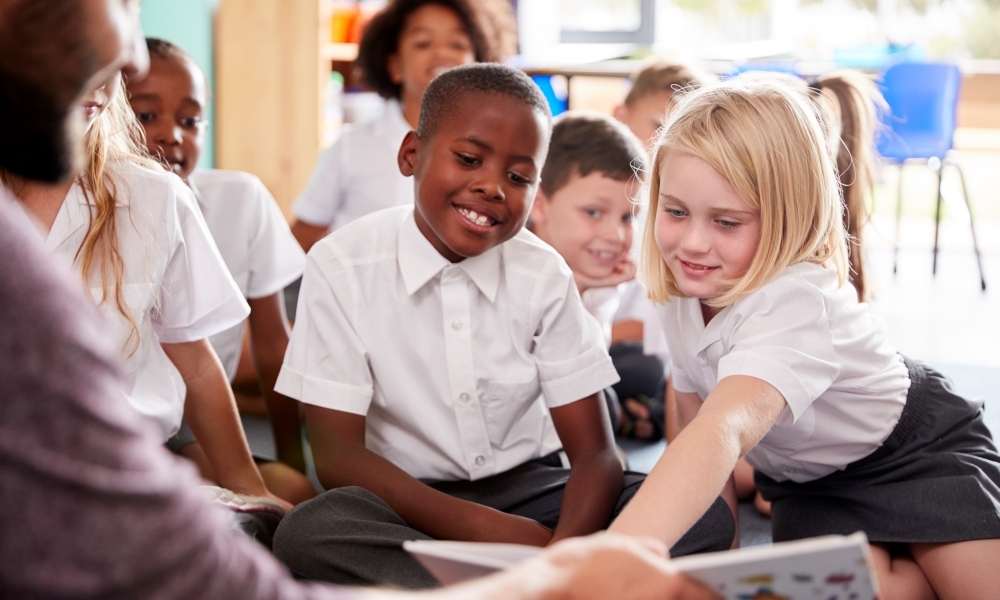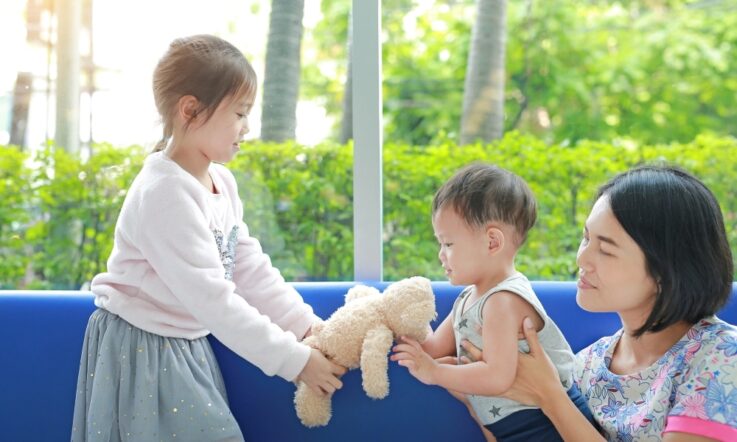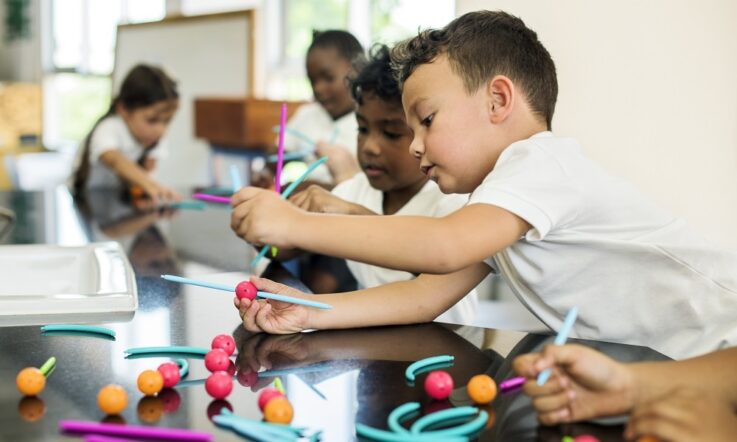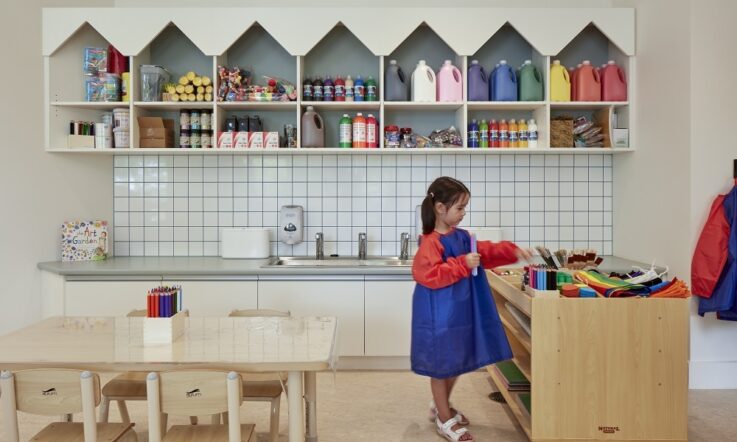In the second part of a Q&A with Teacher, Lecturer in Early Childhood Education at the University of Tasmania Lauren Armstrong shares some of the ways primary teachers and early years educators can help children develop pro-social skills through activities involving turn taking and sharing. You can read yesterday’s article to get up to speed with the research on this topic and find out why these skills are so important.
Armstrong worked as a teaching associate at Monash University for six years before becoming an early career researcher in the field of early childhood education at the University of Tasmania. She has also worked in long day care settings, and in crèche settings with mixed age groups. Her current research involves early childhood policy development, educational reform, change management, curriculum pedagogy and assessment, and teacher education more broadly to support educators in the field.
What are some strategies for teaching young children to take turns and share, both at home and in Early Years Education and Care settings? What kind of games, activities and interactions promote this kind of learning?
Families and educators can role model respectful relationships through communicative turn taking and negotiating positions through their social interactions. They can also model ways to regulate and express emotions through the use of resources such as the ‘zones of regulation’, or by using ‘I’ statements such as, ‘I feel sad because I can’t have a turn of the iPad right now,’ so that can be really useful.
Creating opportunities to share can be really useful both at home and in education settings. So again, this can create that continuity between contexts as well, if we’re using similar strategies in the different settings, children will be getting used to that and it’ll be more embedded in what they’re learning.
So family members can take turns to share about their day, and children in educational settings can take turns to share about their experiences and their perspectives, or show and share special items from home – we see that a lot.
Using props like puppets or dolls can provide opportunities for children to process, understand and imitate appropriate observations of sharing. And there’s a lot of storybooks about sharing and turn taking and emotional regulation that can prompt discussion and develop these understandings further.
In early childhood settings, educators can set up activities that encourage sharing and turn taking, such as activities that promote children to work or play in pairs, or one at a time, or class management strategies can be put in place to set clear rules and expectations around how the play, sharing and turn taking needs to work.
Some of the examples might be using things like egg timers to monitor how long children can spend on an activity, or displaying an activity board, where children can add their name card to certain activities throughout the day so that everyone knows whose turn it is to be engaging with what resources and things.
There’s also a range of games – like board games, card games and dice games – that can encourage sharing and turn taking which can be used at home or in educational settings.
Another factor that can really assist in developing these skills is providing opportunities for mixed age grouping. We know children learn from the ‘more knowledgeable other,’ and within what Lev Vygotsky termed as the ‘zone of proximal development’. Fostering opportunities for young children to engage with older siblings or relatives, or mixed age group times with the early childhood setting, can be really beneficial to building the social and emotional skills such as sharing and turn taking; younger children can learn through interacting with the older children.
How can schools support the continued development of these skills? And what about for older students who may still be having trouble with these skills?
Similar to early childhood settings, schools can actually create opportunities for children to build upon their social and emotional skills.
There are a few different approaches that can be used and that are particularly useful for older children in primary settings that may still be struggling with some of these areas. Zones of regulation can continue to be used in classrooms to assist children to identify and process difficult emotions, like establishing a reflection zone – a quiet, safe and sensory place that can help children who might struggle with their emotional regulation.
To help foster a positive classroom culture, teachers can actually create a roster with children rather than for children, to take on specific roles of jobs within the classroom and to take turns with that as well. It gives them a sense of ownership within the classroom.
Children can be encouraged to share their perspectives, their ideas and experiences through whole-group discussion, question times and small group work. So really allowing that communicative turn taking to thrive there.
There’s certain pedagogical approaches as well that teachers can use to support these skills.
One of them is known as the ‘democratic community learning approach’ – where there’s a real focus on trusting relationships and shared power between the teacher and the children. There’s a higher degree of agency in student voice in that approach, and a lot of group discussion, decision making, critical thinking and reflection – so some of those higher order processes. But again, really emphasising the turn taking, and showing respect for diverse ideas and contributions, and having an intentional sharing of diverse views or opinions about complex issues. And with this approach it takes a really holistic view of development. So, it encompasses all of those areas – not just cognitive, but also communication and social and emotional as well.
For conflict resolution skills, the restorative justice approach can be really useful, and great with primary school aged children. It can really help for students that struggle to develop their emotional and social skills and to maintain those pro-social behaviours.
That particular approach uses community building circle times to form relationships. It can include the use of a talking stick or a similar object – so again, showing that turn taking. And it’s very similar to those traditionally used by our First Nations people to heal relationships. So restorative conferences are used to address conflict and harm, and then circles of support and accountability are used to support a re-entry into the social space or relationship.
Is there anything else you’d like to add?
Some of the important things to consider in relation to turn taking and sharing is that early childhood educators need to be working with families and schools to ensure that continuity of approaches across those different contexts.
We also need to consider where children are at in their levels of social and emotional development so that we can ensure that we set appropriate expectations regarding these areas, and support children with the underpinning fundamentals that we’ve talked about like communication, emotional regulation and relationships.
If we can achieve this, our children will be able to benefit greatly in terms of their social and emotional wellbeing, and also their future success in education and their lives more broadly.
In this Q&A, Lauren Armstrong talks about some of the activities that you can use in early years education settings and in the classroom to promote skills associated with taking turns and sharing. Which of these activities do you use in your practice?
As a principal, consider the continuity in the learning and development of children as they are transitioning between early childhood and school contexts. How can you facilitate these transitions smoothly, embracing consistencies in pedagogical approaches?



